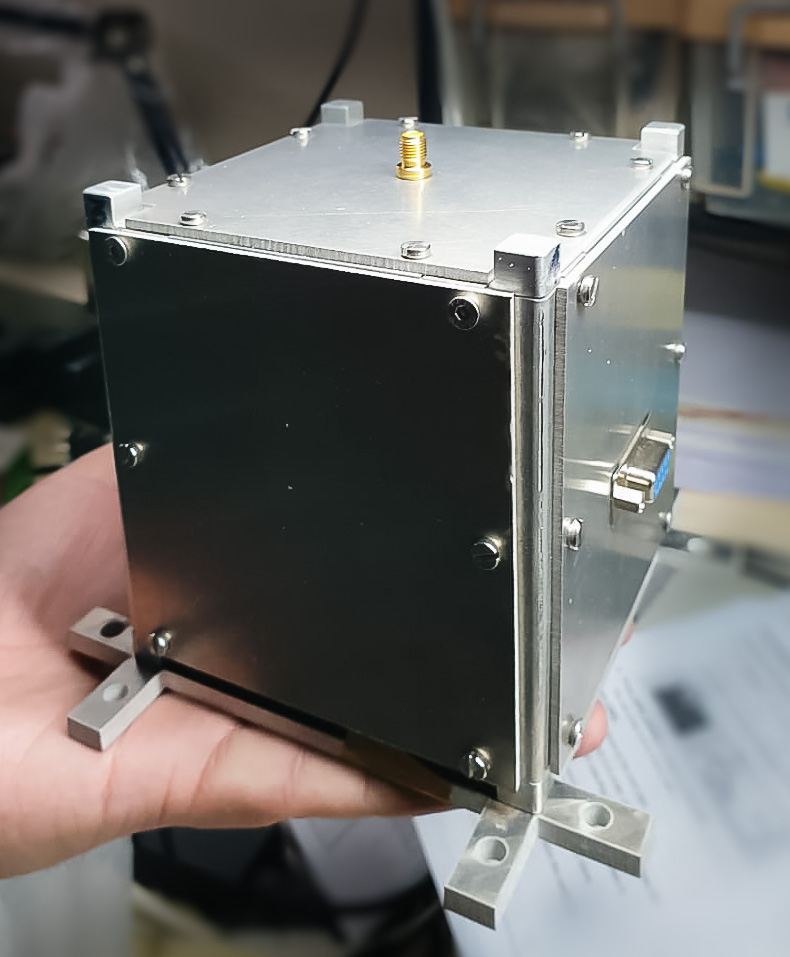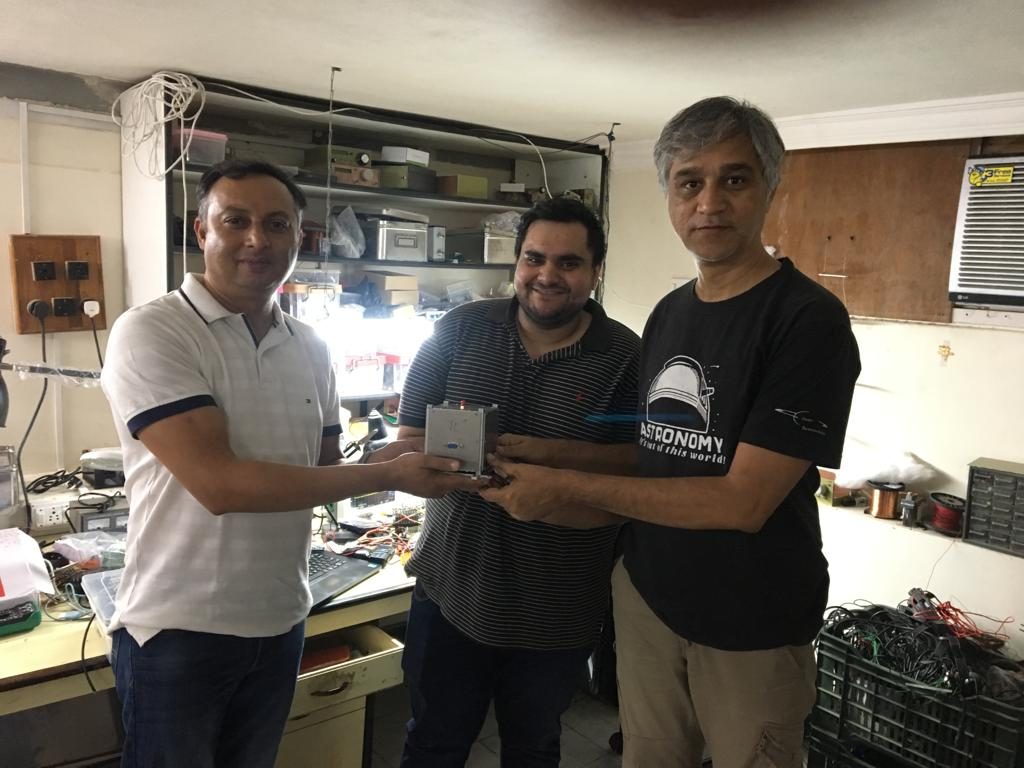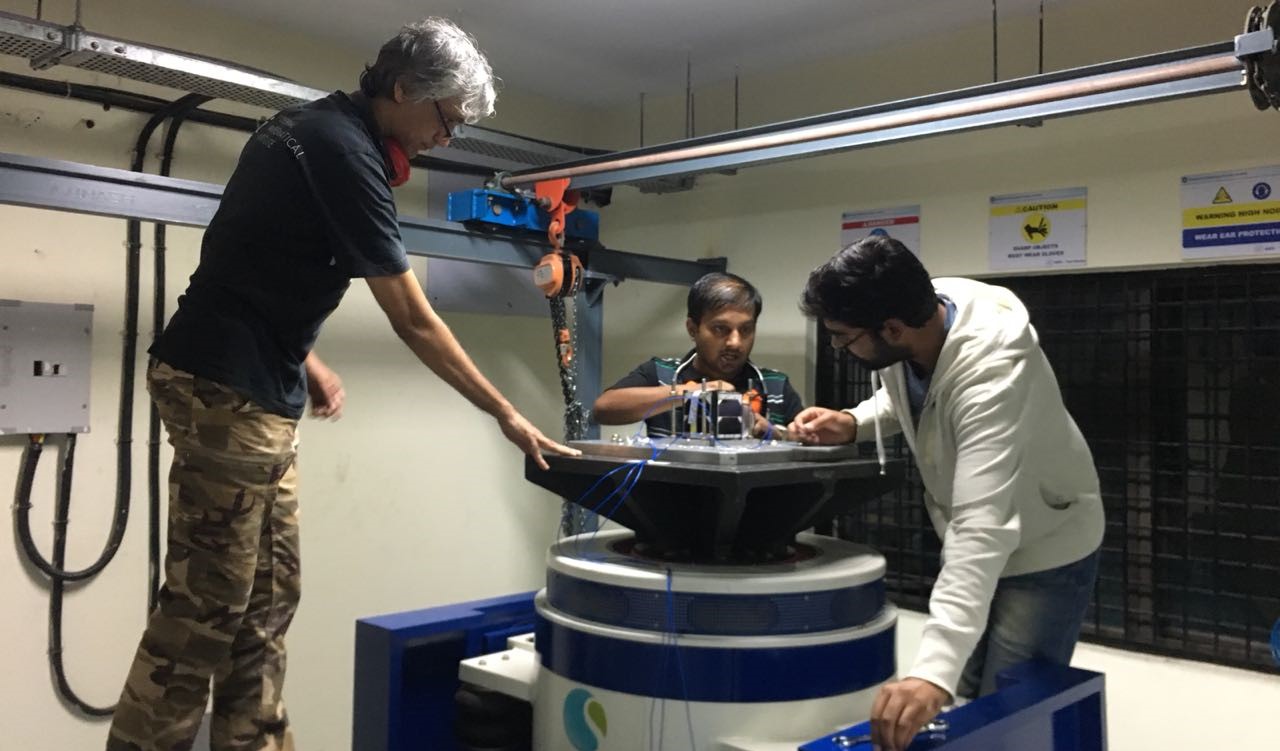
Among the many satellites launched on ISRO’s PSLV C45 mission on April 1, 2019 is a world-first, developed by an Indian company. AISAT (Exseed Sat2) designed and manufactured by Mumbai-based Satellize, India’s leading satellite manufacturing firm, changes the rules of how satellites are made, and how much they can cost.
AISAT (Exseed Sat 2) has a few world firsts: it is the world’s first commercial and professional use of ISRO’s revolutionary Stage 4 Platform. It is also the world’s first professional-grade satellite made without a power system and an antenna – and in addition it is the world’s fastest documented manufacture of a satellite, built from start to finish in just 6 working days.
The world’s first professional use of ISRO’s Stage 4 Platform.
There are hundreds of thousands of useless objects orbiting the earth in space, cluttering it up and being a danger to future generations of space travellers. Many of these are parts of rockets that orbit uselessly, having finished their role of delivering satellites and just circling the planet. With the increasing number of satellite launches, there is a need to reduce space debris and to use rocket launch vehicles more sensibly.
ISRO, the Indian Space Research Organisation wants to mitigate this problem. ISRO’s PSLV is a satellite launch vehicle with four stages. While the first three stages are jettisoned and return to earth, the fourth stage reaches orbit of 500 km or more and releases its payloads. After the payloads are released, this fourth stage typically becomes space debris, orbiting the earth for a long time.
ISRO wanted to use this fourth stage as a satellite itself with payloads attached directly to it. This would give it a useful life beyond its first role of delivering other satellites to orbit. In December 2018, ISRO asked Amsat India to provide an amateur radio payload which would be the first professional payload in the world to use the Stage 4 platform. Amsat India in turn contracted Satellize to design and build this payload.
The first payload without power and communication systems.

The Stage 4 platform is a radical re-use of an asset that would otherwise be wasted. It’s a large chassis – approximately 8 feet across and 10 feet high. Once its engines have finished firing and after it has delivered other satellites to orbit, it now becomes a super-satellite itself, with a large array of solar panels and with a dedicated antenna and a potential base for other payloads.
This means payloads don’t need to have power or antennae of their own. They can simply tap into central power and communications provided by the platform.
This makes design of payloads both easier and more complicated. Easier because payloads become smaller, and can focus on the particular function: broadcasting or observation or whatever else the client wants. And more complicated, because one has to work closely with the platform provider to ensure a complete match between the payload’s power and communication requirements and what the platform provides. Not just in sunlight when the solar panels are charging but also in the sun’s shadow when the systems run off batteries.
Satellize worked closely with Stage 4 platform experts to design and build its payload – a ‘digipeater’ that its client Amsat India wanted to launch.
The world’s fastest documented manufacture of a space-faring payload.
Typically, satellites take 12 to 24 months to manufacture.
Satellize has innovated with agile manufacturing systems, where its first satellite Sat 1 was manufactured in just 9 weeks and launched successfully on SpaceX’s Falcon 9 rocket in December 2018.
Satellize broke another record in designing and manufacturing AISAT (Exseed Sat 2). It was given the task by Amsat India on January 15, 2019 – and it delivered the completed satellite on January 21, 2019 to Amsat India and ISRO for testing, just 6 working days later.
The finished payload passed all tests, including thermo-vacuum, environmental, vibration, electromagnetic interference and electromagnetic compatibility tests that ISRO threw at it.
Satellize sees a world with thousands of satellites being launched every year on hundreds of rockets. To make this come true, organisations should be able to order satellites nearly off-the-shelf and Satellize’s agile methodology is the fastest in the world to make the democratization of space an affordable reality.
Reducing the cost of satellites by 50% or more.
The Stage 4 platform brings several advantages to organisations that want satellites. First – it makes them smaller, because you no longer need to build power and communication systems into each satellite – those are centrally delivered.
Second, it makes them easier and faster to build – because your payload design can be simplified without having to build in your own solar panels, batteries and antennae.
Put these together: a reduction in components, and the time needed to design and manufacture, and the cost of the payload goes down drastically, by over 50%.
And there’s more of an advantage too: a lighter, smaller payload often is less expensive to launch, too – so there is even more savings all around, and this makes space accessible to even more organisations.
Once only nations could afford to go into space. Now even small organisations can make the dream come true. Do get in touch if we can help you.

AISAT (Exseed Sat 2) and what it does.
Amsat India is an organisation of amateur radio enthusiasts, dedicated to help during times of disasters or critical communication needs. The payload built by Satellize for Amsat India is an Automatic Packet Reporting System (APRS) – also called a ‘digipeater’ – like a mirror and amplifier for communications based in space.
APRS is an amateur radio based system for real time digital communications. APRS data is typically transmitted on a single frequency and repeated locally by area relay stations for widespread dissemination on earth, especially in times of need.
An APRS digipeater in space, like the one built by Satellize and launched on April 1, works like terrestrial APRS digipeaters, but with a much larger global footprint.
Calling all amateur radio operators: radio hams:
The frequency used by this payload will be 145.825 MHz in line with other Amateur Radio APRS satellites and the path is via AISAT and also via ARISS (Amateur Radio on International Space Station).
The PSLV C45 launch is scheduled on April 1st 2019 at 09:27 IST or 03:57 UTC.
The APRS payload will be powered on at 12:29 IST or 06:59 UTC on April 1, 2019 approximately over 70⁰N Longitude and 65⁰E Latitude (somewhere over Sweden, Norway, Denmark, Finland, Poland and Russia).
Amsat India and Satellize welcomes the amateur radio fraternity around these countries to report the first signals and to make full use of the payload. We also request Radio Hams worldwide to use this payload actively and for satellite gateways to feed APRS traffic.
“There’s a new space revolution happening in India. Exseed is driving it” – Ashhar Farhan
Ashhar Farhan, the Founder & CTO of Satellize and partner in India’s first space-focused fund, Exseed Electron Fund says “In 2017, India was the world’s leading satellite launch destination with a market share of over 35%, primarily due to the efforts of ISRO and Antrix. But we were perplexed that even decades after India’s experience and expertise in space, we had no private sector to show for it.”
“At Exseed Electron Fund and our first incubated company Satellize, we hope to build out the space and electronics hardware ecosystem in India in the private sector. We see new space as a $200 billion sector where Indian and emerging market start-ups can play a leading role.
“At Exseed Electron Fund, we are eager to work with entrepreneurs who dream big, and want to build something more substantial than the next local food delivery app.”

